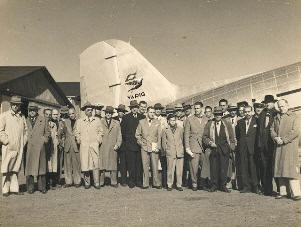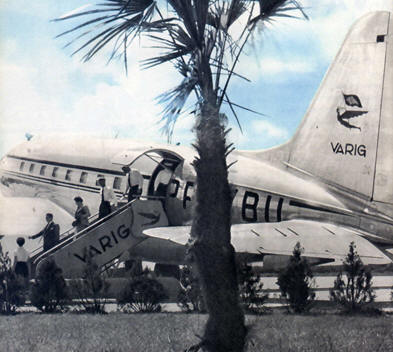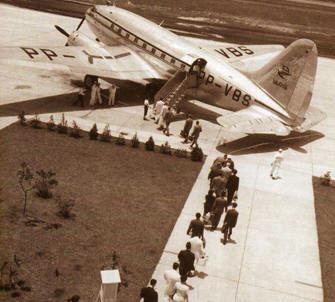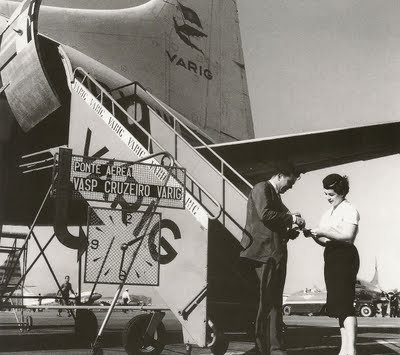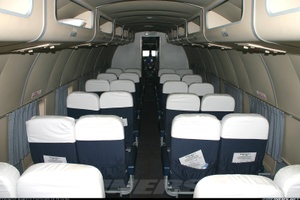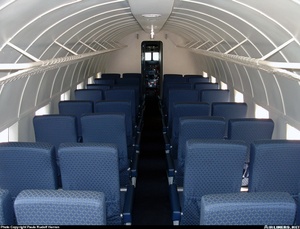|
|
20s | 30s | 40s | 50s | 60s | 70s | 80s | 90s | 2000s |
 |
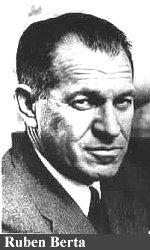
"The passenger doesn’t depend of us, we depend of him. We don’t do any favor when we serve him, he makes a great favor when request us to serve him." Ruben Berta
So far, most VARIG’s fleet was
consisted of German aircraft, and with the Second World War it
was increasingly difficult to get parts for these aircraft,
forcing a fleet renewal. The first new aircraft acquired was the De
Havilland Dragon Rapide, an airplane from England. With it VARIG started
its first international flight between Porto Alegre and Montevideo,
on August 5, 1942.
When Brazil entered into the War, Otto Meyer resigned VARIG to
protect it from his German origin. In his place entered Rubem Martin
Berta, VARIG’s first employee, hired by Otto Meyer himself. Rubem
Berta began working at 19 years and became president in December,
1941. Berta's dream was see VARIG circle the world, but its most
daring and innovative contribution to the company was Fundação de Funcionários da VARIG (VARIG’s Employees Foundation) creation, which was later renamed to Fundação Rubem Berta. All VARIG’s
employees belonged to the foundation, which now have 50% of
company’s shareholding. The main inspiration for Foundation creation
was "Rerum Novarum" from Pope Leo XIII , which proposed a social
structure where part of the profits were divided among the employees,
thus reducing social inequality between rich and poor. Ruben Berta
was also inspired by the work of Jean-Jacques Rousseau "The Social
Contract" and the "Quadragesimo Anno" by Pius XII. The General
Assembly, in 1945, unanimously approved the transfer of shares and
the creation of Varig's Employees Foundation. The Article 1 of the
Foundation defined that it was created to ensure social welfare,
protection against disability, among others, and benefits such as
pensions, pensions, among others, for all VARIG's employees and
their families.
In 1943 VARIG ordered eight Lockheed Electra for expansion and fleet
renewal. With Electra VARIG began the on board service. A box with snacks
was distributed to passengers by the copilot, because there were no
flight attendants yet.
The first Curtiss C-46 was incorporated 1948. They were larger than the DC-3 and had three basic configurations: Luxo (luxury), Mista (mixed) and Cargueiro (freighter). The "Luxury" version had larger and more comfortable seats, so flights operated with this configuration had a more expensive fare. The Curtiss C-46 Freighter version was the first purely cargo aircraft operated by VARIG. At that time freight transport by air was still developing and allowed things before impossible such as being able to deliver a newspaper the same day in another region of the country or transporting extremely perishable foods.
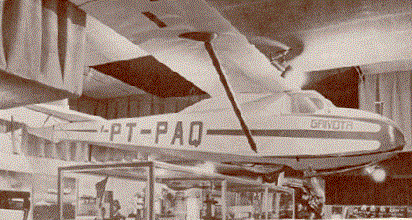
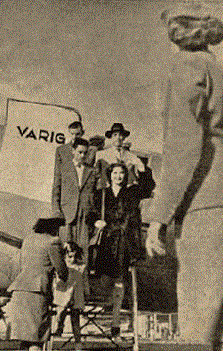
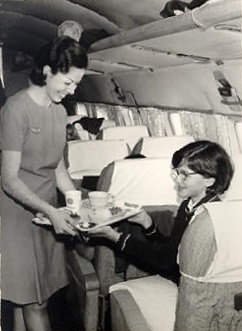
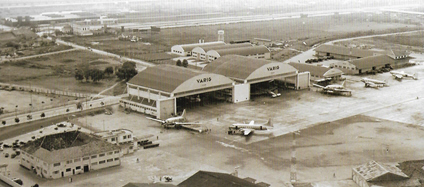
|
40s |
||
|
Fleet evolution:
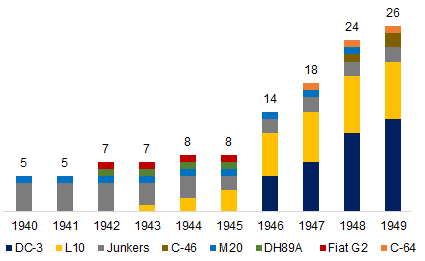
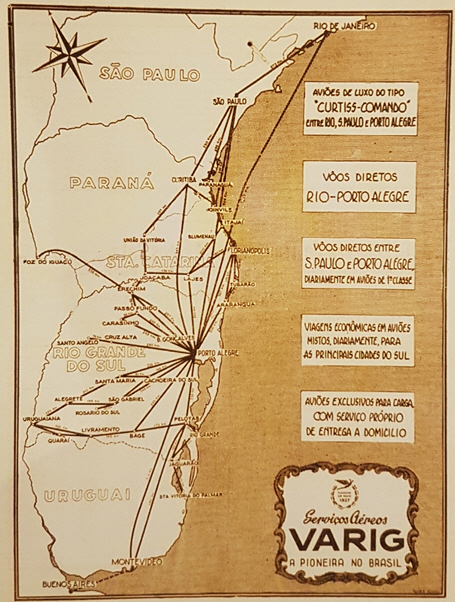
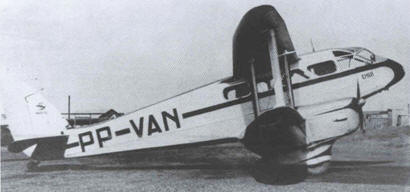
VARIG's 40s route map / De Havilland Dragon Rapid
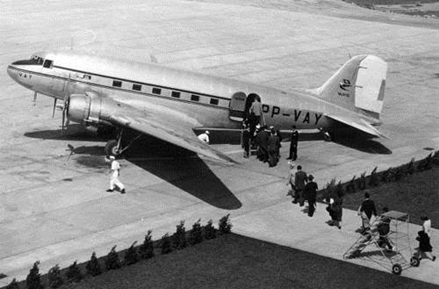
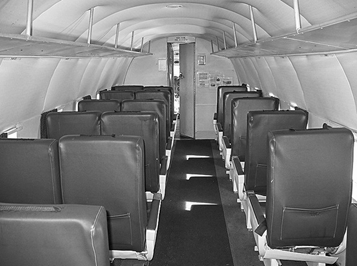
Douglas DC-3


Curtiss C-46
 |
|
HOW WAS FLYING IN THE 1940s? In the 1940s Brazilian aviation began to be more mature. VARIG acquired more modern aircraft, with more comfort to passengers. The Messerschmitt M20 was the first to have a closed cockpit. At that time also began the concept of fleet standardization, with Lockheed Electra I aircraft. In the 40's it was also started on-board service, a box of cold snacks was distributed to the passengers by the co-pilot. From 1946 a new era began in commercial aviation with the introduction of the Douglas DC-3. These aircraft revolutionized aviation around the world for being cheap and extremely versatile. The DC-3 made several routes viable and profitable. After the end of World War II, thousands of units of the military version (C-47) were converted to commercial aviation (DC-3). The great offer made the DC-3 an extremely cheap aircraft, becoming part of almost all airlines fleet, and responsible for the emergence of hundreds new airlines. The same happened in Brazil, the DC-3 was present in the fleet of almost all airlines and still gave viability for the emergence of new airlines. With the offer excess, VARIG and other airlines began to face a fiercer competition in the domestic market, leading to the fall of tickets prices.
In 1948
the first Curtiss C-46 arrived, until that moment, the
largest aircraft ever operated by VARIG, capable of
carrying up to 46 passengers. Since then, DC-3 and C-46
became VARIG's main aircraft and those that the company
had in greater quantity. Both operated in the company's
fleet for about 25 years. |
